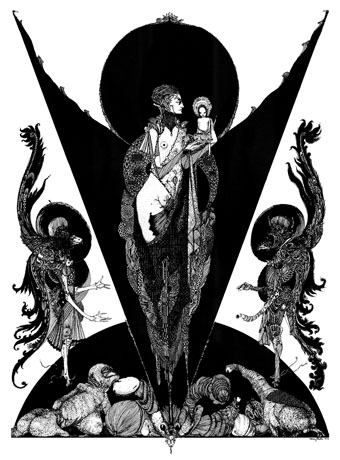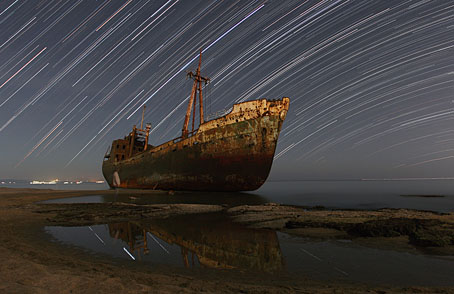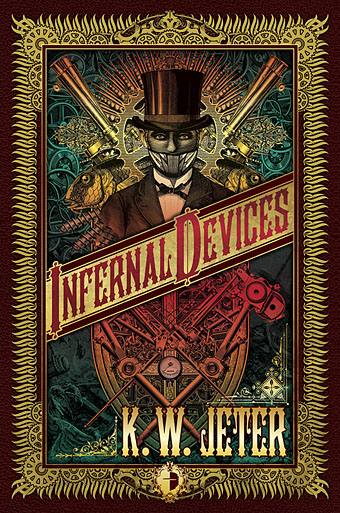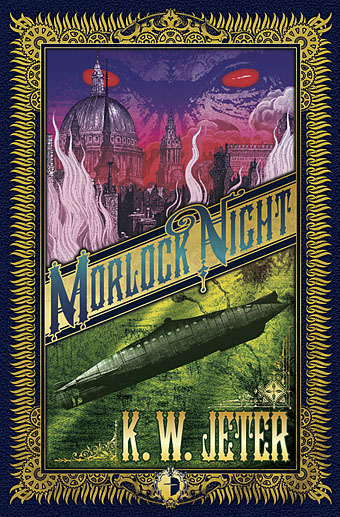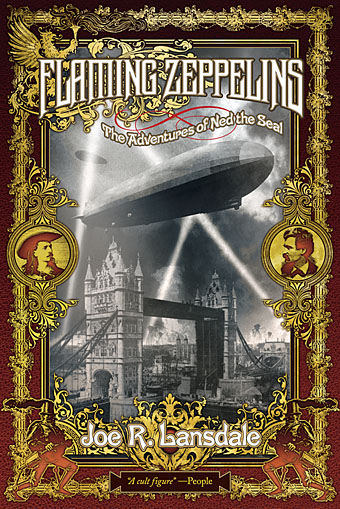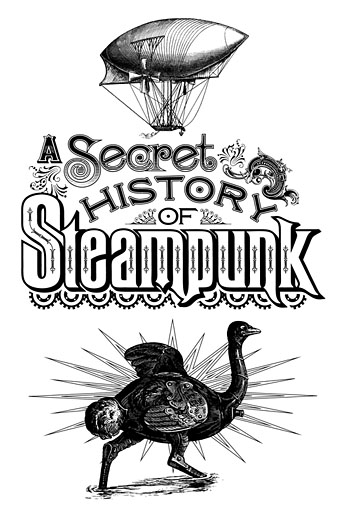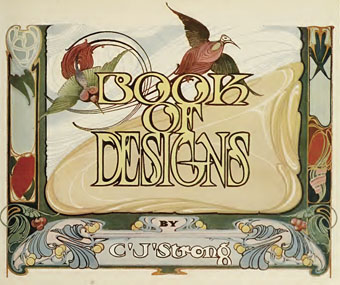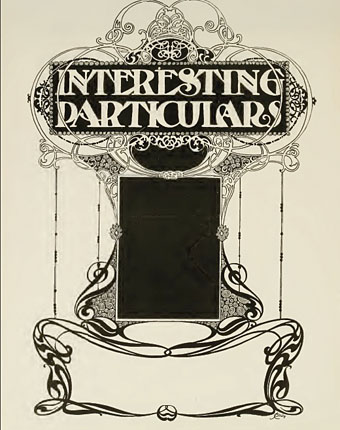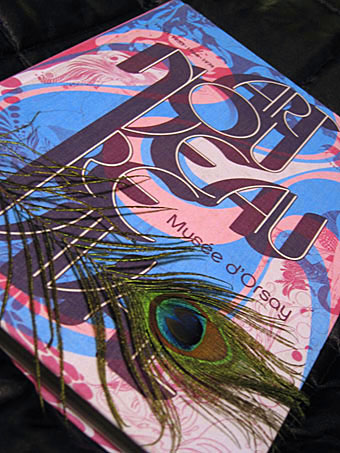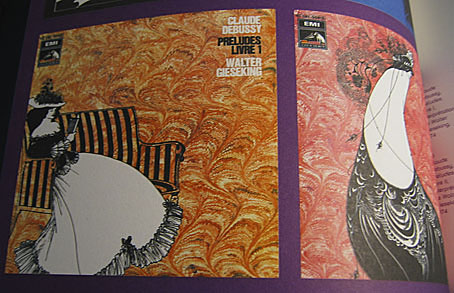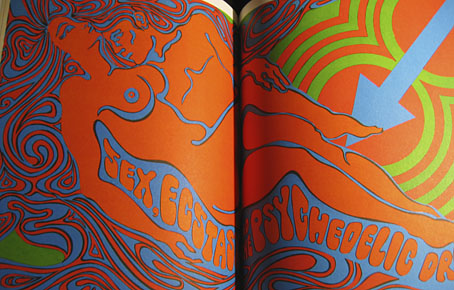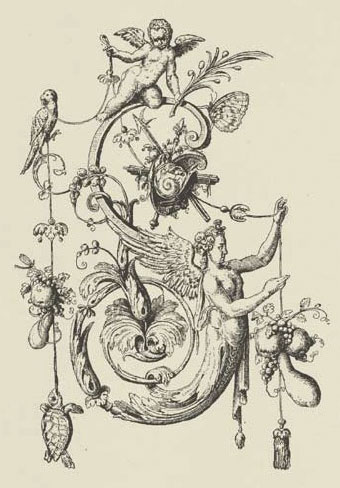Goddem with Attendants (1924) by Harry Clarke.
• Some of Harry Clarke’s extraordinary illustrations from Goethe’s Faust can be seen at A Journey Round My Skull. And a reminder for anyone who missed them, Clarke’s Poe illustrations at Golden Age Comic Book Stories.
• HP Lovecraft – Audio Books, Radio Plays, & Audio Documentaries. Out-of-print recordings and (no doubt) pirate copies of more recent things. I found this page by accident so it was a surprise to see my 1999 Lovecraft portrait used there. I used to own the David McCallum Dunwich Horror, an album with a singularly appalling sleeve illustration.
• Better album sleeves can be found here: Prospective 21e Siècle, a collection of foil designs from 1967. Some of the very challenging music within can be downloaded at the Avant Garde Project archive. Related: Have an electroacoustic Halloween with Ilhan Mimaroglu’s Le Tombeau d’Edgar Poe (1964) and Wings of the Delirious Demon (1969).
Star Trails and the Captain’s Ghost, a photo by Chris Kotsiopoulos at Astronomy Picture of the Day.
• “The horror industry is totally male dominated from its directors to its slashers, and even its bloggers…and I think that needs to change.” Day of the Woman, a blog for the feminine side of fear.
• 6 of the Scariest Queer Horror Books Ever. I think I’d agree with the commenter in picking The Haunting of Hill House by Shirley Jackson.
• Designer Jonathan Barnbrook (pictured in a graveyard by the looks of things) is interviewed at MyFonts.
• A Weird and Scratching Beauty: The Art of John Coulthart and Call of Cthulhu.
• Is the Royal Masonic School for Boys the scariest building in Britain?
• 50-million-year-old insect trove found in Indian amber.
• The Café Kaput Samhain 2010 mixtape.
• Monster Mash (1962) by Bobby “Boris” Pickett & The Crypt-Kickers.

